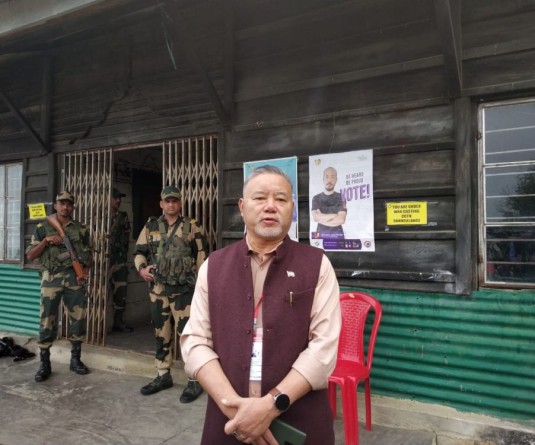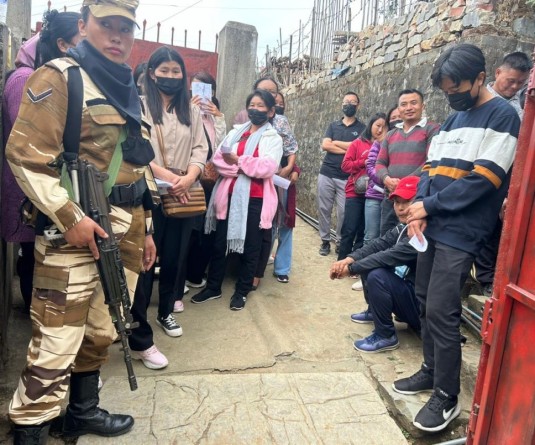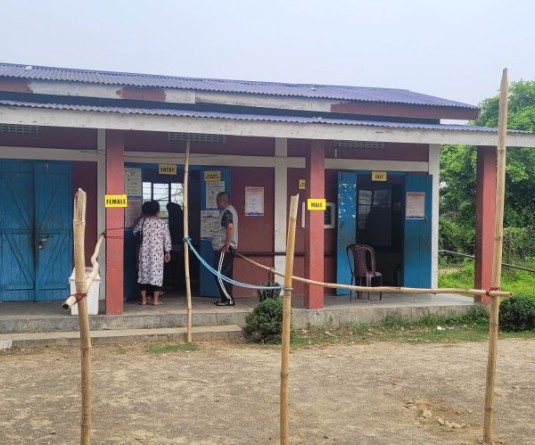
Morung Express News
Dimapur | August 20
Non compliance of the Nagaland building bye-laws, which was formulated to regulate the construction of buildings, is becoming a matter of utmost concern as construction of buildings, mostly high-rises is seeing a rapid increase in the commercial hub Dimapur by the day.
Nagaland and the rest of the North East India lie in Seismic Zone V, the highest damage risk zone prone to high intensity earth quakes, which makes it all the more imperative that new construction of buildings, public infrastructure strictly comply to relevant building codes provisions and other safety codes.
Besides the procedures for obtaining permit or No Objection Certificate (NOC) for building construction and other related provisions, the Nagaland Building Bye-Laws 2012 has also formulated the additional provision for structural safety in hazard prone areas among others.
In a nutshell, according to the Nagaland building bye-laws, no person is allowed to erect, re-erect or make alteration or demolition in building or cause the same to be done without first obtaining a separate building permit for each building from the authority.
The Nagaland Government had authorized the respective municipal/town councils in all the districts for implementation of the Nagaland building bye-laws and NOC are expected to be issued after stringent, transparent and fair inspections. However, in Nagaland’s commercial hub, implementing the building by-laws is only a mere formality, as the Dimapur Municipal Council (DMC) encounter non-cooperation or disregard of the bye-laws from the land owners. The municipal council in concern is also not taking the issue seriously either.
If one would go by the book, for any construction to be undertaken, a municipal/town council can issue NOC only after following a lengthy set of procedures which include approval of site plan and drawing, soil testing, structural test certificate from structural engineers on record, confirmation of land patta, documents from the construction engineer on record etc. A certain fee is also charged for the NOC depending on the number of stories to be constructed.
Besides, the site engineer are made responsible to provide step by step report of the construction taking place in order to ensure that the building has good structural configuration, is of standard quality and safe. But these rules are only in the book as far as Dimapur or the rest of Nagaland is concerned.
90% of people obtaining NOC are those availing bank loans
“The only people coming to the DMC office to obtain NOC for building construction are those who are availing bank loan for construction of the building,” W. Ezung, Junior Engineer at the Development Branch, DMC told The Morung Express.
According to Ezung, 90% of the people coming to obtain NOC are those availing loan from banks for the construction- either it be residential or commercial. It is mandatory for banking institution to demand NOC for building construction for release of loans.
In 2016, the DMC issued around 50 NOC for building construction in Dimapur. This is only a negligible figure. With a burgeoning population and ongoing expansion of the city, in an approximate, at least 150 building constructions are carried out every year in the Dimapur town jurisdiction itself, Ezung estimated.
Landownership a deterrence to implementing building bye-laws
So what are the issues that deter the municipal council from stringently implementing the building codes, as authorized by the state government? Here too, landownership and “Article 371A” comes into play, Ezung exclaimed.
“If we go to a construction site to enquire whether they (owner) have obtained building construction permit, we are instead rebuked; they tell us that it’s their land and their right to build in whatever way they wish…” Ezung lamented. “In Dimapur, the maximum storey of building permitted is G+6 (ground floor plus six stories), however there are multiple 7-8 storey buildings on the rise, and, we are not able to do a thing,” he added.
Awareness on the building bye-law is observed to be another issue. A landowner constructing a commercial building at Duncan Basti had no idea that he is required to obtain NOC from the municipal council. “What the State Government ought to do is to earnestly provide public awareness on the building bye-laws and make sure that it is stringently adhered to,” a DMC member opined.
Need back up from district admin
Ezung felt that the bye-laws can be strictly regulated if the municipal council is backed by the district administration in implementing the same. “We cannot do it alone, the State Government should wake up from its slumber, initiate necessary action in order to ensure that the bye-laws is stringently adhered to,” the DMC member pointed out.
Moa Sangtam, who is going three months into his job as the DMC administrator, agreed that the implementation of the building bye-laws indeed need to be streamlined. He observed the problem lies with the implementation of the order due to lack of man power.
“We are yet to touch this issue due to engagement in other pressing matters including sanitation and cleanliness, but we will certainly be taking this matter up at the earliest time possible,” Sangtam said.
Dimapur is already plagued by ancient buildings, unplanned settlement with substandard structures and construction materials and the lack of compliance to the building codes, is like a time bomb ticking, just waiting to explode.
And so far as report goes, Nagaland capital Kohima which was recently declared as one of the cities located in the highest earthquake risk zones (zone-v) is in a more vulnerable state. Kohima is considered as geographically unstable not only because of the risk of earthquakes but due to high vulnerability to hazards like landslide.





